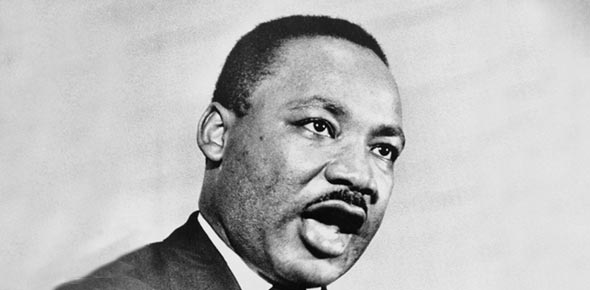Martin Luther And The Reformation

This quiz is designed to test students' knowledge about Martin Luther and the Reformation.
Questions and Answers
- 1.
1. A pardon from a priest for sins one has committed is called:
- A.
A petition
- B.
An indulgence
- C.
A thesis
- D.
Mass
Correct Answer
B. An indulgenceExplanation
An indulgence is a pardon granted by a priest for sins that one has committed. It is a remission of the temporal punishment for those sins, allowing the individual to avoid or lessen the time they would spend in purgatory. This concept was particularly prevalent in the Catholic Church during the Middle Ages, where indulgences could be obtained through various means such as pilgrimages or charitable acts. The practice of selling indulgences became controversial and was one of the factors that led to the Protestant Reformation in the 16th century.Rate this question:
-
- 2.
Luther nailed his list to a church door in:
- A.
Rome, Italy
- B.
Hamburg, Germany
- C.
London, England
- D.
Wittenberg, Germany
Correct Answer
D. Wittenberg, GermanyExplanation
Luther nailed his list to a church door in Wittenberg, Germany. This is historically significant because it marks the beginning of the Protestant Reformation. Martin Luther, a German theologian, posted his Ninety-Five Theses on the door of the Castle Church in Wittenberg on October 31, 1517. This act was a public invitation for academic debate on the abuses of the Catholic Church, particularly the sale of indulgences. It sparked widespread discussion and eventually led to the formation of Protestantism as a separate branch of Christianity.Rate this question:
-
- 3.
This man became one of the leading figures of the Reformation:
- A.
Martin Luther
- B.
George Wittenberg
- C.
Saint Ignatius of Loyola
- D.
Saint Augustine
Correct Answer
C. Saint Ignatius of LoyolaExplanation
Saint Ignatius of Loyola became one of the leading figures of the Reformation due to his role in founding the Society of Jesus, also known as the Jesuits. The Jesuits played a significant role in the Counter-Reformation, which was the Catholic Church's response to the Protestant Reformation led by Martin Luther. Ignatius of Loyola's teachings, writings, and the establishment of the Jesuit order helped to strengthen and spread Catholicism during this period of religious upheaval.Rate this question:
-
- 4.
Members of the Society of Jesus were known as:
- A.
Jesusites
- B.
Jesusians
- C.
Jesuits
- D.
Societarians
Correct Answer
C. JesuitsExplanation
The members of the Society of Jesus were known as Jesuits. This religious order was founded by St. Ignatius of Loyola in 1540 and is known for its commitment to education, missionary work, and intellectual pursuits. The term "Jesuits" has become synonymous with the members of this order and is widely recognized in the Catholic Church and beyond.Rate this question:
-
- 5.
True or false:During a pilgrimage to Rome in 1510, Luther saw priests that were living like royalty instead of as monks.
Correct Answer
TrueExplanation
During his pilgrimage to Rome in 1510, Luther witnessed priests who were living opulently, resembling royalty rather than leading a humble monastic lifestyle. This observation likely contributed to Luther's growing disillusionment with the Catholic Church and its practices, eventually leading to his criticism and the subsequent Protestant Reformation.Rate this question:
- 6.
True or False:Luther believed that a person had to be a member of the church in order to be a Christian.
Correct Answer
FalseExplanation
Luther did not believe that a person had to be a member of the church in order to be a Christian. He advocated for the idea of justification by faith alone, emphasizing that salvation is attained through faith in Jesus Christ rather than through membership or adherence to any particular religious institution. Luther's teachings challenged the authority and practices of the Catholic Church, leading to the Protestant Reformation.Rate this question:
- 7.
True or False:Luther was praised by the pope and the Emperor in Rome because of his work against the church.
Correct Answer
FalseExplanation
Luther was not praised by the pope and the Emperor in Rome because of his work against the church. In fact, Luther's actions and teachings were seen as a direct challenge to the authority of the Catholic Church, leading to his excommunication and condemnation as a heretic. The pope and the Emperor in Rome were both critical of Luther and his ideas, and they did not support or praise him for his work.Rate this question:
Quiz Review Timeline +
Our quizzes are rigorously reviewed, monitored and continuously updated by our expert board to maintain accuracy, relevance, and timeliness.
-
Current Version
-
Mar 22, 2023Quiz Edited by
ProProfs Editorial Team -
Apr 28, 2010Quiz Created by
Jenc
STEM Entrance Exam Quiz: Can you pass this Stem Exam?
STEM Entrance Exam Quiz: Can you pass this Stem Exam?
What Celebrity Do I Look Like Quiz? Discover Your Celebrity Look Alike
What Celebrity Do I Look Like Quiz? Discover Your Celebrity Look Alike
 Back to top
Back to top


